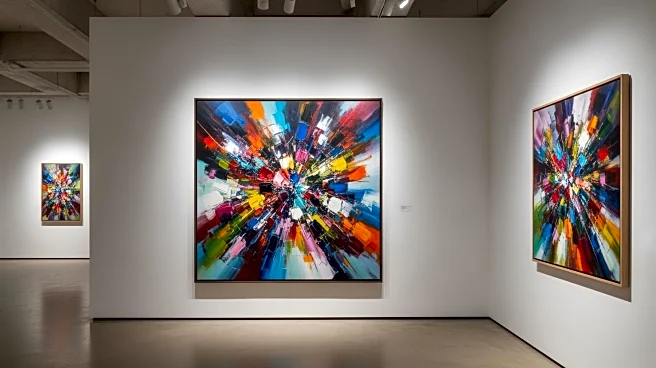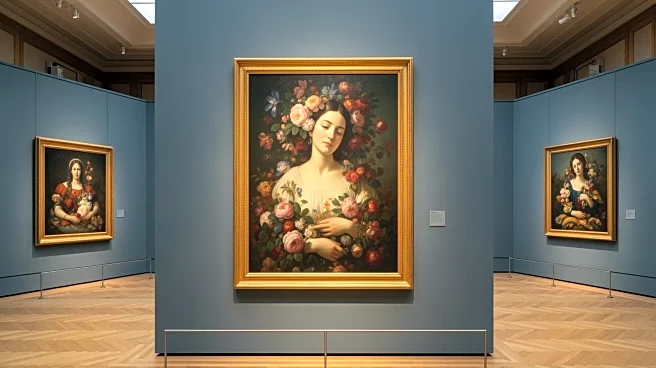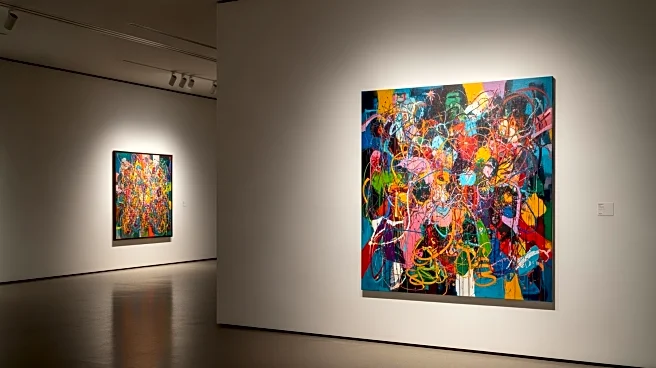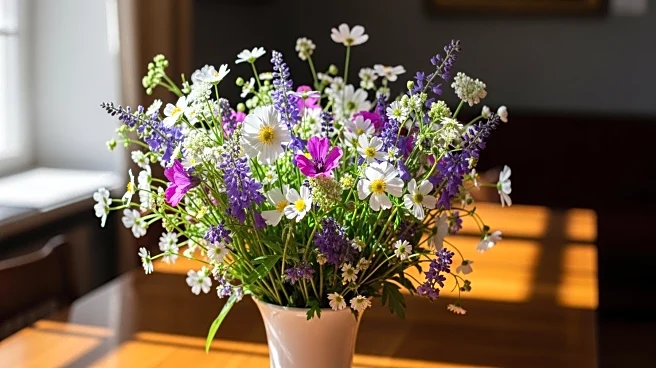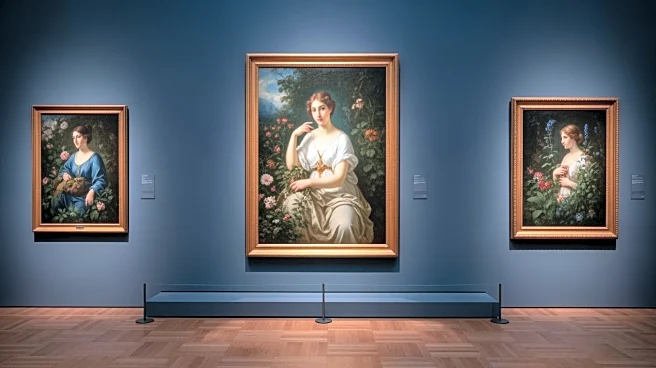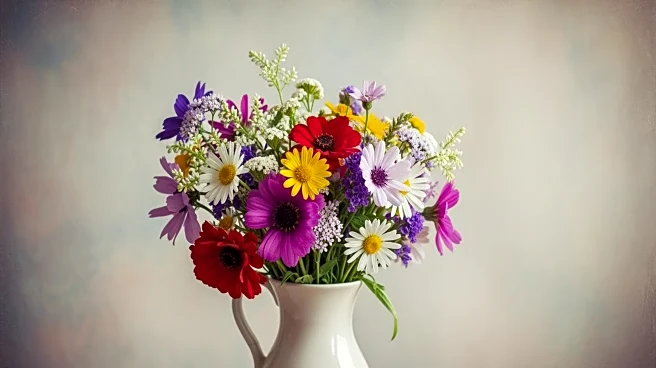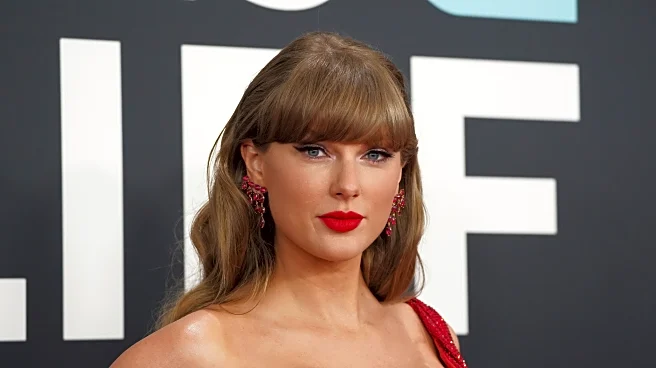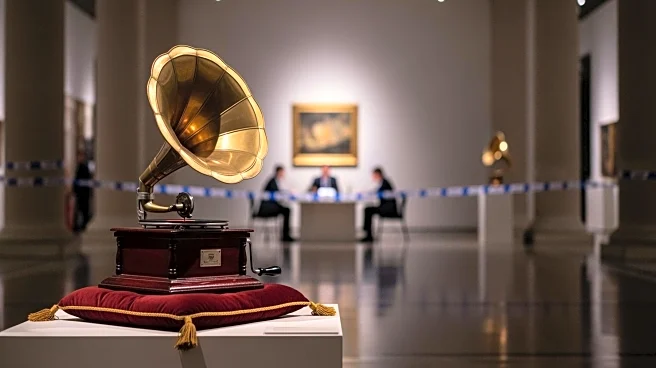What's Happening?
Taylor Swift fans are visiting the Museum Wiesbaden in Germany to see a painting of Ophelia, which was featured in Swift's music video for 'The Fate of Ophelia' from her new album 'The Life of a Showgirl.'
The video has garnered over 68 million views, and Swift appears as Ophelia in a white gown surrounded by water lilies. The painting, created by German artist Friedrich Heyser, has attracted hundreds of additional visitors to the museum, surprising staff with the influx of younger attendees. The museum is capitalizing on this interest by offering a special tour related to Swift's video.
Why It's Important?
The surge in visitors to the Museum Wiesbaden highlights the significant cultural impact of Taylor Swift's work, demonstrating her ability to influence art appreciation and tourism. This phenomenon underscores the intersection of pop culture and traditional art, as Swift's fans engage with historical artworks through her modern reinterpretations. The museum's increased attendance may lead to broader interest in its collections, benefiting the institution economically and culturally. Additionally, this event exemplifies the power of celebrity influence in driving public interest and engagement with the arts.
What's Next?
The Museum Wiesbaden plans to host a special tour titled 'Taylor Swift’s Ophelia at the Wiesbaden Museum' on November 2. Fans who dress as Taylor Swift or Ophelia can attend the tour for free, potentially increasing visitor numbers further. The museum may continue to explore collaborations or events that leverage Swift's influence to attract diverse audiences. This could lead to more innovative approaches in museum marketing and programming, aiming to sustain the heightened interest generated by Swift's video.
Beyond the Headlines
This event raises questions about the role of popular culture in shaping public engagement with art. It highlights how modern media can revive interest in historical artworks, potentially altering perceptions and appreciation of traditional art forms. The museum's experience may encourage other cultural institutions to explore similar collaborations, using contemporary figures to bridge the gap between historical art and modern audiences.
